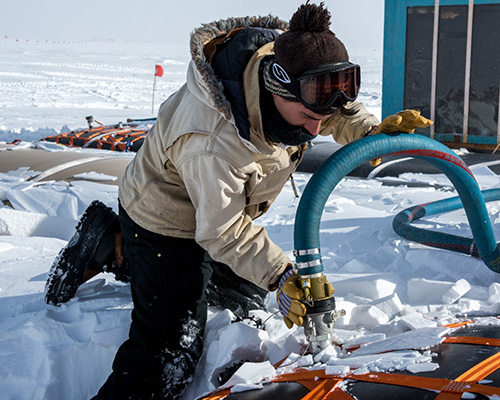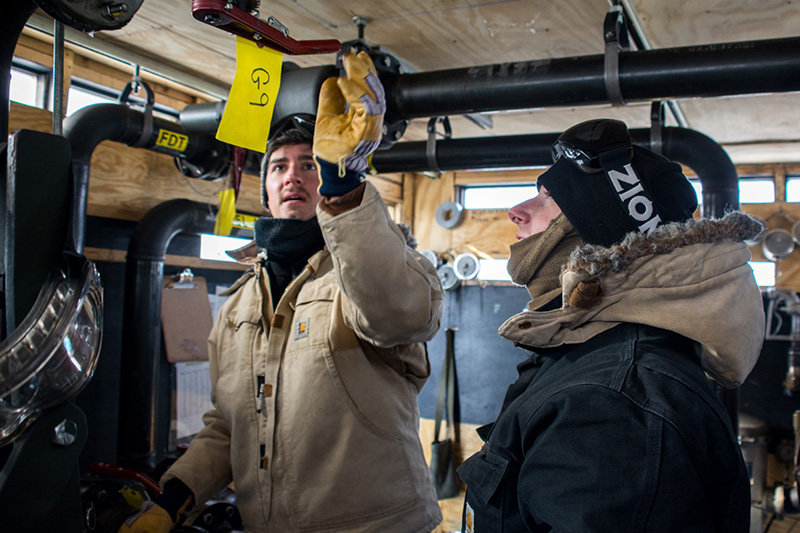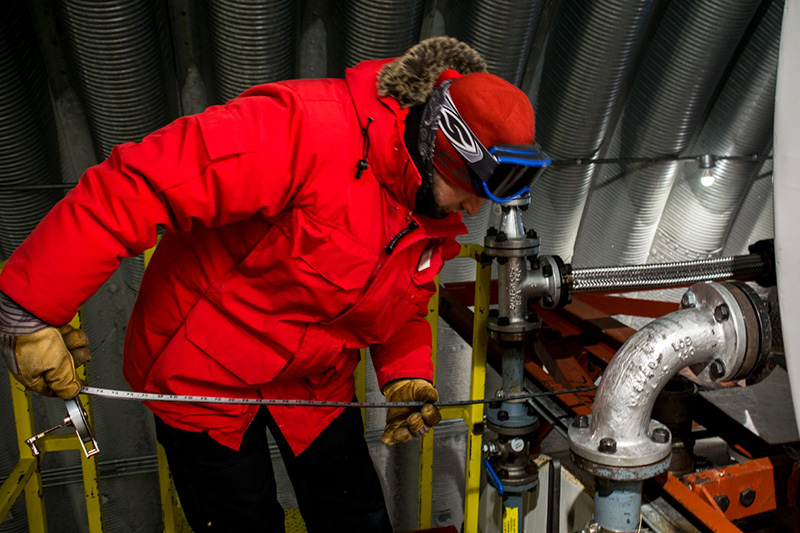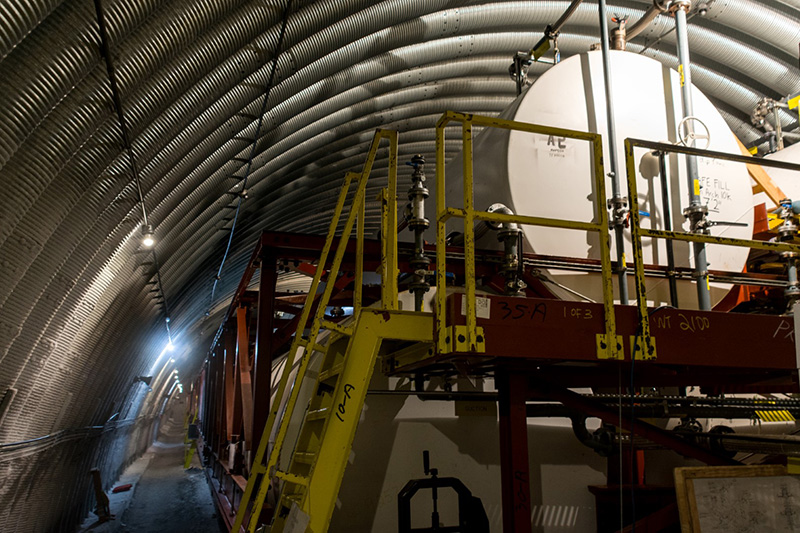Podcast: FuelsPowering the South PolePosted September 18, 2019
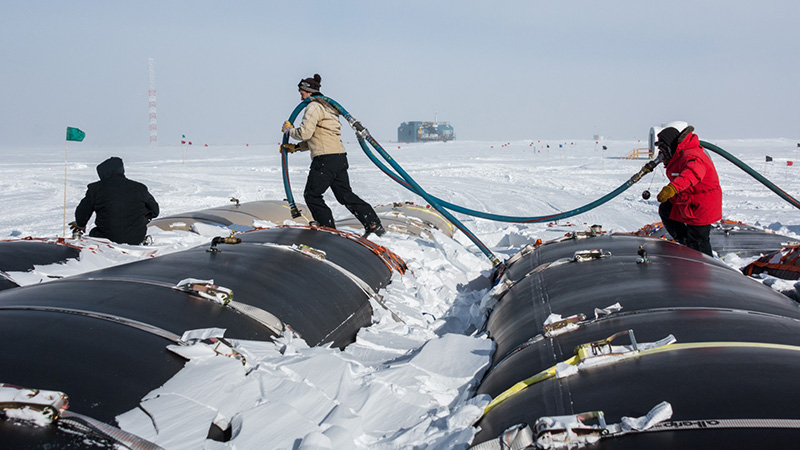
Photo Credit: Mike Lucibella
(Left to right) Jarred "Red" Taylor, Ben Eberhardt and Tim Mullen haul a hose over recently-delivered fuel bladders at the South Pole. They're brought by the South Pole Traverse, a fleet of tractors that hauls them over 1,000 miles from McMurdo Station.
In Antarctica, scientists conduct cutting edge research on a harsh and barren continent. It's no easy task, but to help make it happen the U.S. Antarctic Program employs small army of support staff to get these researchers the supplies they need, transport them to where they need to go and keep them safe throughout. A lot of the jobs they do are the same that any small town needs to function, often with a specialized twist that comes with working in such a remote place, but others can be less obvious. The Antarctic Sun Podcast is taking a behind-the-scenes look at the workers and what they do to make science at the bottom of the world possible. This Episode: Fuels Fuel may be the most important resource at the bottom of the world. The special Antarctic mix of jet fuel keeps the light on and the furnaces warm at the Amundsen-Scott South Pole Station. Each season more than 450,000 gallons is either flown in by ski-equipped LC-130s or delivered by the South Pole Traverse, fleets of tractors that together haul it more than 1,000 miles from McMurdo Station to the South Pole. Once it arrives, the fuel operators, or “fuelies” as they’re known, unload and distribute the station’s lifeblood. They keep track of where it goes and how much is used and are ready to spring into action in the unlikely event of a leak. Just about everything there runs on fuel in some way or another. The station's power plant, its fleet of vehicles and any of the small planes that fly through all rely on the critical resource. Because of that, its supply carefully managed and monitored, especially over the nine-month winter when it’s too cold for any kind of resupply mission. Photo Gallery |



For USAP Participants |
For The Public |
For Researchers and EducatorsContact UsU.S. National Science FoundationOffice of Polar Programs Geosciences Directorate 2415 Eisenhower Avenue, Suite W7100 Alexandria, VA 22314 Sign up for the NSF Office of Polar Programs newsletter and events. Feedback Form |



